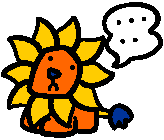
---------------------------------------------------
#74 競馬やグレイハウンド・レースはどうなのですか?
---------------------------------------------------
こうしたレースは、人間の娯楽や楽しみのためだけに、動物を、その
ニーズや状態を無視して、虐待することの典型です。レースの結果に賭
けるという行為が、その快楽の主な源となっています。賭をする人々の
中には動物の立場を考えてくれる人もいますが、レースに来るほとんど
の人にとって興味があるのは、賭けそのものであって、動物ではありま
せん;レース以外のギャンブルが増えてくると、動物のレースを見に来
る人の数は激減しました。
一部のトップ・クラスの犬や馬は、好条件のもとで飼われているかも
しれませんが、ほとんどの動物たちはその範ちゅうには属しません。最
低限の生活水準は保たれてはいますが、動物たちに最大限の能力を出さ
せるために(あるいは場合によっては八百長でわざと負けさせるために)
ドラッグや電気ショックやむちなど、様々な手段が使われるのです。
このような行為(犬にわざと血をつけたり血を味わわせたりすること
も含め)の多くは違法とされていますが、こうした違法行為の報告は後
を絶ちません。レースでは莫大な金額が動くのですから、結果を操作し
たいという誘惑がどれほど強いものかは、容易に想像がつきます。
特に競馬では、コースそのものが危険をはらんでいます;平面でのレ
ースでも障害レースでも、転倒や骨折は頻繁に発生します。足が不自由
になった馬が、重傷を負うリスクがあるにも関わらず薬漬けにされてレ
ースを続けさせられることもよくあります。
そして最後に、動物たちは、成功を収めなかったり期待通りに能力を
発揮できなくなった場合には、処分されてしまうのです。馬は、場合に
よっては引退後に施設に送られ、しっかり面倒を見てもらえることもあ
るという点で恵まれてはいますが、たいていの馬は廃馬屠殺場送りとな
ります(廃馬屠殺場は、使い物にならなくなった年老いた家畜を処分す
る場所です)。最近では、十分に実力を発揮できない馬や最盛期を過ぎ
た馬を馬主が自ら殺して保険金を騙し取るという詐欺行為も発覚してい
ます。引退後のグレイハウンドを引き取る施設はほとんど存在しません。
JK
競争馬は運動過多による肺出血(EIPH)と呼ばれる病気になることがよ
くあります。激しい運動のせいで肺や気管に血液がたまってしまうとい
う病気です。オーストラリアで行われた調査では、1,180頭の競馬馬の
42%がこの病気にかかっていることが分かりました。
足が不自由になる競争馬のパーセンテージも高いです。靱帯をひねっ
たり関節を捻挫したり脛を痛めたりするのに加え、ひざを骨折すること
も日常茶飯事です。障害競走は最初から馬が転倒することを前提とした
レースです。そのために馬は首の骨を折って死んだり、「治療不可能な」
怪我を負って、獣医の手で殺されたりしているのです。
デイヴィッド・カウルズ・ヘイマー
参照:
#72、
#73

...............



-----------------------
#74 What about horse or greyhound racing?
-----------------------
Racing is an example of human abuse of animals merely for entertainment
and pleasure, regardless of the needs or condition of the animals. The
pleasure derives primarily from gambling on the outcome of the race. While
some punters express an interest in the animal side of the equation, most
people interested in racing are not interested in the animals but in betting;
attendance at race meetings has fallen dramatically as off-course betting
options became available.
While some of the top dogs and horses may be kept in good conditions, for
the majority of animals, this is not the case. While minimum living standards
have to be met, other factors are introduced to gain the best performances
(or in some cases to fix a race by ensuring a loss): drugs, electrical
stimuli, whips, etc. While many of these practices are outlawed (including
dog blooding), there are regular reports of various illegal techniques being
used. Logic would suggest that where the volume of money being moved around
is as large as it is in racing, there are huge temptations to massage the
outcomes.
For horses, especially, the track itself poses dangers; falls and fractures
are common in both flat and jump races. Often, lame horses are doped to
allow them to continue to race, with the risk of serious injury.
And at the end of it all, if the animal is not a success, or does not
perform as brilliantly as hoped, it is disposed of. Horses are lucky in that
they occasionally go to a home where they are well treated and respected, but
the knackery is a common option (a knackery is a purveyor of products derived
from worn-out and old livestock). (Recently, a new practice has come to light:
owners of race horses sometimes murder horses that do not reach their
"potential", or which are past their "prime", and then file fraudulent
insurance claims.) The likely homes for a greyhound are few and far between.
JK
Race horses are prone to a disease called exercise-induced pulmonary
hemorrhage (EIPH). It is characterized by the presence of blood in the lungs
and windpipe of the horse following intense exercise. An Australian study
found 42 percent of 1,180 horses to be suffering from EIPH.
A large percentage of race horses suffer from lameness. Fractures of the
knee are common, as are ligament sprain, joint sprain, and shin soreness.
Steeple chasing is designed to make the horses fall which sometimes results
in the death of the horse either though a broken neck or an "incurable"
injury for which the horse is killed by a veterinarian.
David Cowles-Hamar
SEE ALSO: #72-#73




